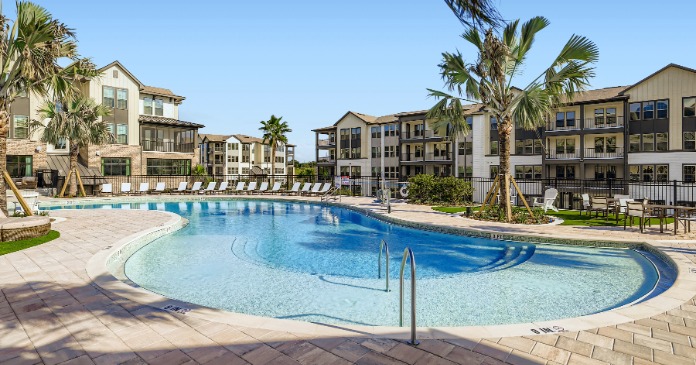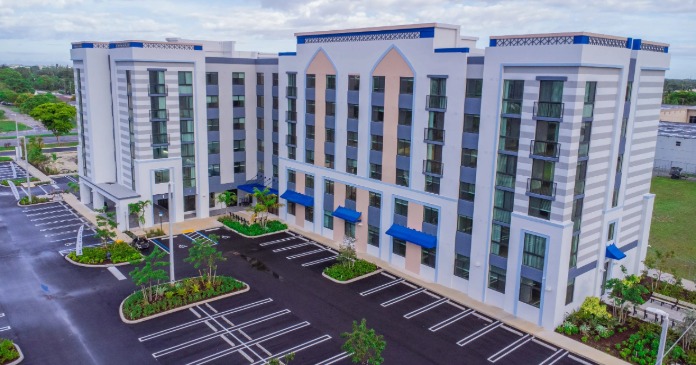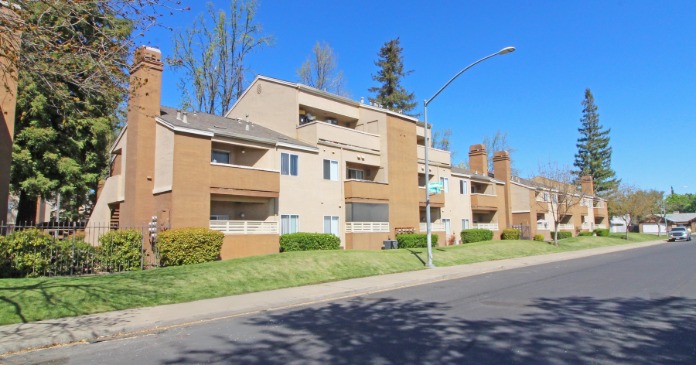
Complexes that stayed dry in heavily flooded areas like west Houston, Kingwood and Spring have been slammed with new tenants. Landlords there are finding their apartments are worth much more than they were before Hurricane Harvey when there was a glut of empty units and flagging demand.
Ric Campo, CEO of Houston-based Camden Property Trust, said his company has few units left to lease and rents are definitely inching up.
Camden uses specialty software to price its units based on daily supply and demand. According to the system, “we’ve had some properties and unit types spike 15 to 20 percent,” Campo said. “We’re not going to do that right now, so we override the system and let it go up 20 bucks or so.”
Single-family rentals are also in high demand. Audra Clark has been looking for a new rental house in the West University area after the one she was living in flooded during Harvey. She and her dog had to swim out the front window and escape by kayak, as the water rose above her knee inside the home.
Clark thought she had secured another house to rent in West U, but then a bidding war started and she decided not to participate. She’s been staying with a friend from law school as she looks for a more permanent solution.
Analysts estimate anywhere from 2 to 6 percent—or as many as 43,000 units—of Houston’s apartment stock suffered Harvey-related damage.
As of Sept. 22, more than 8,123 units had been leased after Harvey, according to the most recent count from Houston-based ApartmentData.com, which began surveying landlords right after the storm to determine how many units were affected.
After reaching 96 percent of Houston-area property owners or managers, the company determined 14,852 units were damaged. That represents 2.3 percent of the overall supply.
Average rent is up at least $16 from its pre-Harvey amount to $1,000 per month.
Demand likely to come
After Tropical Storm Allison in 2001, rents increased 6 to 7 percent. But at that time, Houston was heading into a recession. The spike could wind up higher this time.
“The economic landscape after Harvey is more positive, so that might lead to a higher rent increase,” said Bruce McClenny, president of the multifamily data firm.
Excluding damaged units, occupancy has increased to 90.4 percent from 89 percent before the storm.
McClenny said his employees are making another round of calls to gather fresh information.
“What I expect to find this time is we will see higher occupancies start to come in. There’s some delay on the part of those people who may be staying with family or friends,” he said. “There’s some demand that’s probably going to hit in October and later.”
Mack Armstrong, senior managing director of real estate for apartment operator Greystar, agrees that the “friends and family effect” soon will begin to take hold. But he’s actually seen demand trail off after the initial burst.
He said some companies that rented or reserved blocks of units anticipating their employees would need them overestimated the demand. One company, which leased 13 units in a Greystar property in the Clear Lake area, didn’t need the units after all.
Armstrong expects any notable spike in rents to be short term, as the damaged units will start coming back over the next couple of months.
Greystar, which also uses electronic pricing for some of its properties, turned the system off in the two weeks after the storm and then put a 5 percent cap on any rent increases through the rest of September.
The system is back on, but it’s being closely monitored.
“We’re moving into a more normal period,” Armstrong said.
Sam Scott, his wife and their Rhodesian Ridgeback, Brandi recently moved into a three-bedroom rental house after staying in their flooded Willow Meadows home for three weeks.
After hearing horror stories of how hard it was for people to find storage units after the storm, Scott said he was relieved that he was able to secure a nearby rental relatively quickly.
“It’s been brisk, but I was pleasantly surprised that there are still homes to choose from,” he said. “When I first started the search, I thought, ‘This is going to be impossible.’”
He is, however, paying “a few hundred bucks a month more,” to lease the unit through the middle of April.
The Scotts are hoping to be back in their home come Tax Day.

Spike expected to stay
Before Harvey, the rental market was beginning to see signs of improvement after a period of falling demand.
The oil bust coincided with the opening of new apartment buildings in the city, and owners were offering generous leasing specials to attract tenants. Those specials are now mostly gone.
Harvey has accelerated the recovery by an estimated 18 months, CBRE, a commercial real estate firm, said in a special post-hurricane report.
“The spike in occupancy driven by Harvey related to leasing activity is expected to stay,” the company said.
Austin-based landlord CWS Apartments said several of its properties here were “greatly impacted” by the hurricane and many tenants were displaced.
The company said it reserved a number of apartments and offered $500 in relocation assistance. It froze rental prices.
Recently, the company began leasing at “current market rents,” it said in a statement.
With the stronger market, developers are now more likely to consider building again.
“We are definitely in a mode where everything’s changed,” McClenny said. “We will probably see more properties permitted or proposed because of this than we otherwise would have.”
Axiometrics, another multifamily data provider, recently released a report showing as many as 43,000 apartments were damaged by the storm.
The company waited until later in September to start surveying the properties. Some operators had more damage than they initially thought, said Jay Denton of Axiometrics, which is part of Richardson, Texas based RealPage.
West Houston complexes, especially those near the Barker and Addicks dams, had significant damage. The data show this far west Houston submarket, downstream from the reservoirs, with more than 4,700 units, or 15 percent, taken offline—the most of any neighborhood.
On Houston’s north side, more than 3,000 units were affected in the Spring/Tomball area, accounting for 21 percent of the existing stock and the largest share across all neighborhoods.
The Humble/Kingwood and Greenspoint areas also saw noteworthy damage to their multifamily properties.
Could flip quickly
The RealPage data are based on a survey of about 1,700 apartment properties located in areas where Hurricane Harvey caused the heaviest damage. If apartment operators reported damage but were unable to provide a number of units impacted, RealPage assumed that all first-floor apartments were affected.
Apartment occupancies could tighten further as Houstonians wait longer for their homes to be repaired amid a labor shortage and a possible shortage of building materials.
Some homeowners may decide to rent long-term instead of rebuilding. And employment could creep up, as well, leading to more natural demand.
“It could flip very quickly,” Denton said.
Camden recently began transitioning its local apartment operations into a more normal phase.
But the revenue management system it uses to price units, a process similar to airline or hotel pricing, has been tweaked to keep rent spikes down.
“We’re definitely not going to be at full-bore pricing until the middle of November,” Campo said.
At the end of September, Camden had 452 more occupied units for the month among its Houston properties. During the same month last year, the company lost occupancy.
Camden, which operates 8,600 units in the area, had one property that flooded. At that complex near Spring Creek, 80 units on the first floor took in water.
Campo expects those units to be back online at the end of this month.
Excerpt: Nancy Sarnoff, Houston Chronicle












